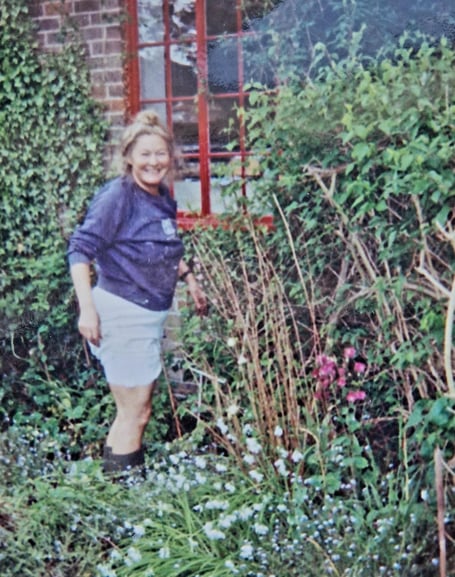Having Your Cake
We recently celebrated the birthday of my eldest granddaughter. How can she possibly be 17 already?
In the words from Gigi, “have I merely been too blind? To realise. Oh, Gigi! Why, you've been growing up before my eyes.”
There was a film she wanted to see, so that would be the basis of the evening. And a meal to precede it. We settled on the Mokka Bistro in Jubilee Square, making sure they knew we needed to be served, eat, and out within an hour. They turned up trumps.
And it is a most excellent place for people watching. My daughter had taken in a small cake, with candle, and had surreptitiously asked for it to be served as we finished our meal. This was duly done, with much singing of Happy Birthday, with which neighbouring diners, and the restaurant staff, joined in. A delightful finish to that part of the celebrations.
But what is the etiquette on such occasions? We wouldn't have taken our own drinks into the restaurant, so why should we be taking in what became our own dessert? Had we taken our own drinks in we may have been charged corkage – is there an equivalent for taking in our own dessert? Puddingage?
Of course, the restaurant could, quite justifiably, have refused to allow our small cake. And they would most certainly have been within their rights. But then I would not be writing this and complimenting the establishment. Had they refused we might have hummed and ha-ad and walked out – leaving a minimal tip.
There has also been much written in the press of late of people who are Working From Home (WFH) but are, in fact, taking their laptops into local cafes and plomping themselves down with, perhaps, a cup of coffee and remaining there for the rest of the day. Taking free heating and lighting and occupying a table which could have been making money for the establishment.
Some WFH in such circumstances have been reported as hushing the staff so they may better hear their telephone conversations. And even their Zoom meetings. Some cafe owners have removed the plugs which gave such table-hoggers access to power for their machines. And those WHF have complained.
Surely such establishments are expected to serve sustenance of the food and drink variety, not act as cut price – very cut price – offices? And what genuine coffee/tea seeker is going to be attracted to a venue which has all the hallmarks of an office and where none of the expected welcoming vibes are detectable?
Flooded Roads
The American humorist, Robert Benchley, supposedly once sent a telegram from Venice “Streets are flooded. Please advise.”
That could have been a description of Woking after the recent heavy rain. The Basingstoke Canal may have had a good deal of water added to it but it cannot rival the canals – and general beauty - of Venice.
Venice was the port for Europe through which all the glamorous and luxurious products of the the exotic areas of India, the Middle East, and the Far East passed. Not just passed, for the city cannily made sure that the best pieces remained in Venice.
Indian jewellery, silks, and porcelain were given a starring role in the paintings produced by any Venetian artist from the 15th and 16th century. Was this the start of product placement? Certainly those goods, and the paintings which showed them off, helped attract tourists to the city.
That attraction has grown to such an extent that nowadays the city is trying to limit the number of tourists. Landed gentry doing the Grand Tour – which began in the 16th century – buying expensive artifacts is one thing but cruise ships bringing in tourists by the thousands, more than 3,300 in a day, is another thing, and a worry for the city.
Sumptuous Veronese: the depiction of luxury goods in 16th century Venice, is the subject of a lecture given by The Arts Society Mayford (TASM) on Thursday 10 October at the Welcome Church, 1-5 Church Street West, GU21 6DJ at 10.30am. Guests are welcome.
The lecture is free for members of TASM, £10 for guests, who are asked to contact the membership secretary, Richard Brace, by email in advance –[email protected].
The speaker will be Chantal Brotherton-Radcliffe, who has an MA in History of Art and 40 years’ experience as a lecturer.
Having also trained as a paintings conservator she will bring an understanding of the making, and the physical painting, to her lecture and thus is eminently well positioned to talk of Titian, Tintoretto, and Veronese, but Veronese it is who delighted most in depicting the textures and colour effects of luxury goods and how he deployed his luxury props – his product placements.
Mourning Suit
Last week my daughters and I drove to Bristol for the funeral of my cousin’s husband. After a night of constant torrential rain we were, surprisingly, blessed with fine weather for the entire journey.
He had been a keen cyclist all his life. Indeed, he met my cousin through her father, a leading light in the local cyclist touring club. Thus it was no surprise that the congregation had many of his cycling pals – in their cycling gear. A big patch of red, white and blue among the more soberly clad mourners.
It is simple for women to find dark clothes to wear at a funeral. Not necessarily black but dark blue or grey. For men it seems it is, nowadays, more difficult. Long gone is the idea of Sunday Best – a suit kept only for church: Sunday services, weddings and funerals.
The fact it was not worn everyday meant it lasted a long time. Although the suit remained pristine the wearer changed considerably. People do change shape and size over the years.
We commented on Hamish’s pals in their cycling gear and decided it was entirely appropriate. So much so that there was discussion as to just what should be worn at funeral.
My family have long understood that death and taxes are unavoidable – however crafty the accountant.
We have long decided on funeral arrangements and my daughters had told me that I would have been sent on my journey wearing a dress they all liked me in. I had jokingly said they would find a note in the pocket of that dress bemoaning the fact that I never did get around to sorting out the things in the attic – having lived in this house all my life has not afforded me the time for such a chore.
Perhaps with more self-discipline and fewer “let's put it in the loft for now” comments I might have done it. But all that has now changed. They think of me in my gardening clothes and so when my time comes mourners will be asked to wear their gardening clothes. That will solve the problem of no Sunday Best suit.
Picture Imperfect
The day spent with part of the family we rarely see in the flesh was fascinating. We were talking about family on the way home and as the four of us were together without anyone else we decided to look out the family albums and, more to the point, old cine films.
When people asked me what I wanted for my 21st birthday I had asked for a cine camera and all the bits and pieces which go with it. So we got out the projector and pored over the instructions to set it up, only to discover that the fan belt had rotted away.
No problem: get online and order a replacement. There was a very informative man on the screen talking about my “vintage projector” and, by extension, its vintage owner. He promised a replacement belt for the Eumig Imperial P8. So no film show for a few days.
But we set about the old photographs and realised how many could be thrown out. “Out of focus.” “Can get that picture online.” “Don't remember who they are.”
Some people bemoan the fact that, although hundreds of photographs are taken these days – often pictures of plates of food – few get printed out and kept for posterity and our descendants.
In the old days there was the palaver of taking a film to the chemist to get prints made, often discovering that many were duds which nowadays, with modern cameras, would have been deleted almost as the camera clicked.
But then the treasures – “Just look at that!” “Remember when...?” We became totally sidetracked with pictures – and memories – all over the place. We shall have to clear them away before we have visitors.
I suppose we could put them in the loft for now?
Family in Stitches
If you have ever watched the television programme Who do You Think You Are? you will know something of the twists and turns met with on the way to discover ancestors.
Who Was Ann Elizabeth Epitaux? is the question put to those at a talk on Wednesday 6 November at the Surrey History Centre, 130 Goldsworth Road,GU21 6ND at 1.30pm. Tickets are free but to book a place on line go to www.surreycc.gov.uk/heritageevents
In 1853 Ann, then aged nine, embroidered a large sampler and 170 years later it was purchased at a local auction and became the focus of a year long project for Woking’s u3a Genealogy Group.
This talk, by Sally Gardiner, will describe how members of the group traced Ann’s life, as well as the lives of her siblings and their families: their lives proved fascinating beyond expectations. There was a mixture of great successes and luxurious living contrasting with struggles to survive and tragic family events.
With roots in Wales and Switzerland, Ann was born into a family at the heart of the fashionable London restaurant scene and her father was responsible for creating some of the first – and best – London ice creams. Links to eminent medical practitioners, the D’Oyly Carte Opera Company and to Sir Henry Irving were all painstakingly uncovered along the way.
There are family resting places that range from a humble grave in Brookwood Cemetery, in Worthing, and in two of London's “Magnificent Seven” cemeteries – Brompton and Nunhead.
It sounds like the script for a film.





Comments
This article has no comments yet. Be the first to leave a comment.